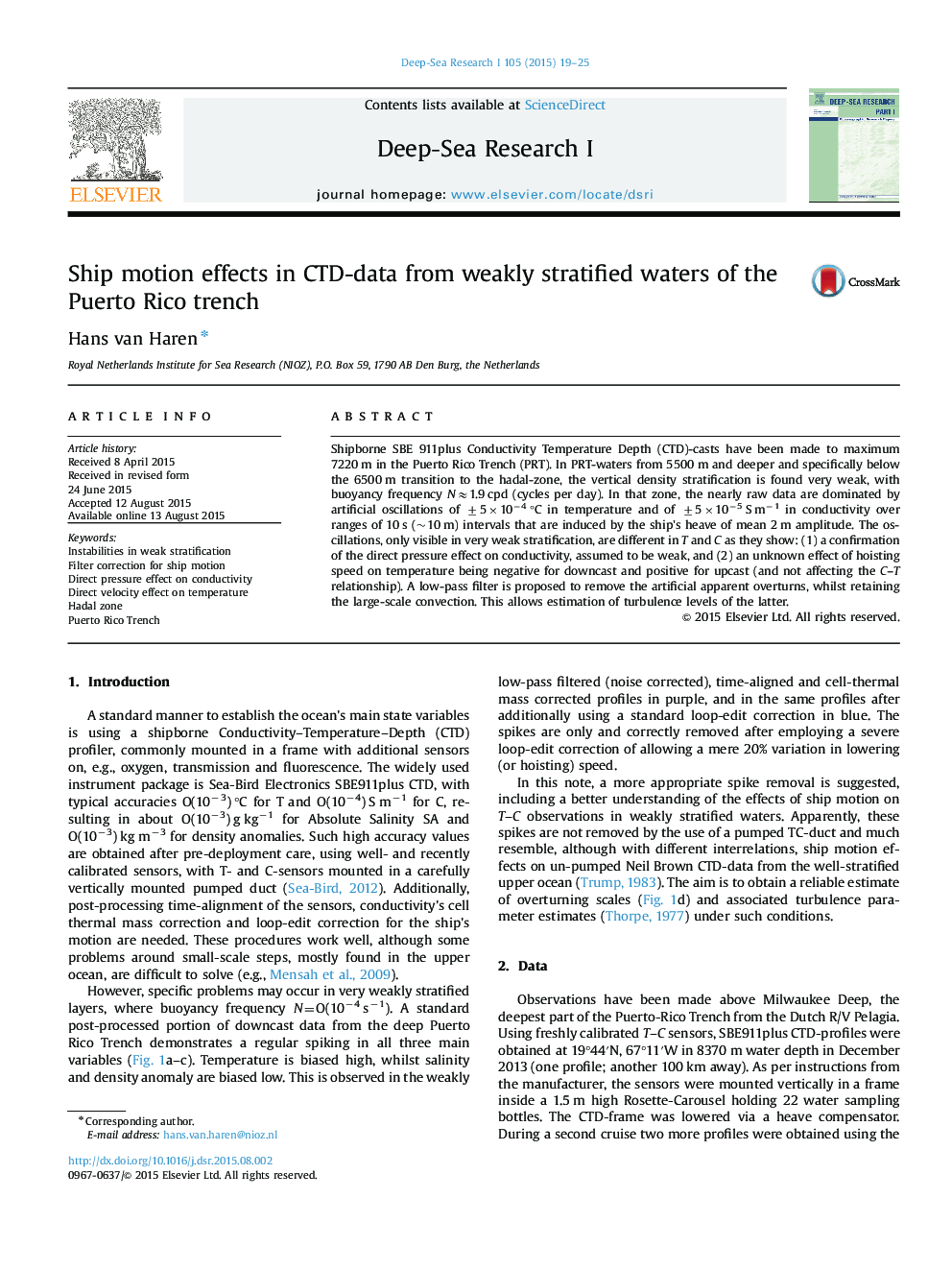| Article ID | Journal | Published Year | Pages | File Type |
|---|---|---|---|---|
| 4534466 | Deep Sea Research Part I: Oceanographic Research Papers | 2015 | 7 Pages |
•Ship motion effects detected in deep, very weak density stratification.•Direct effect of pressure on conductivity variations.•Direct effect of hoisting speed, pressure time derivative, on temperature variations.•Low-pass filter proposed before estimating turbulence parameters of deep convection.
Shipborne SBE 911plus Conductivity Temperature Depth (CTD)-casts have been made to maximum 7220 m in the Puerto Rico Trench (PRT). In PRT-waters from 5500 m and deeper and specifically below the 6500 m transition to the hadal-zone, the vertical density stratification is found very weak, with buoyancy frequency N≈1.9 cpd (cycles per day). In that zone, the nearly raw data are dominated by artificial oscillations of ±5×10−4 °C in temperature and of ±5×10−5 S m−1 in conductivity over ranges of 10 s (~10 m) intervals that are induced by the ship's heave of mean 2 m amplitude. The oscillations, only visible in very weak stratification, are different in T and C as they show: (1) a confirmation of the direct pressure effect on conductivity, assumed to be weak, and (2) an unknown effect of hoisting speed on temperature being negative for downcast and positive for upcast (and not affecting the C–T relationship). A low-pass filter is proposed to remove the artificial apparent overturns, whilst retaining the large-scale convection. This allows estimation of turbulence levels of the latter.
